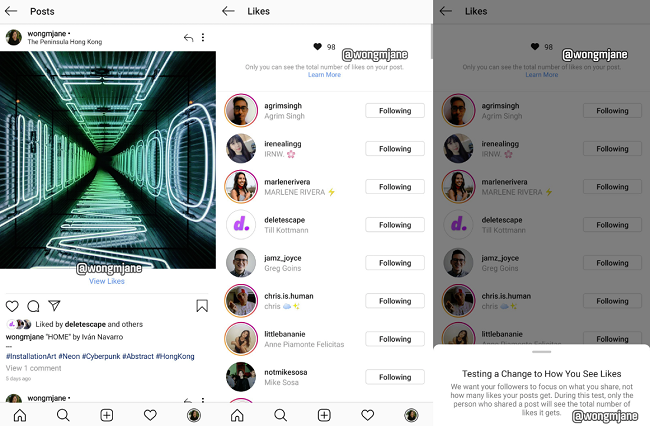Topics:
Instagram MarketingSubscribe now and get the latest podcast releases delivered straight to your inbox.
Do Social Media “Like” Metrics Influence Negative Audience Behavior? Instagram Conducts Test.

Apr 25, 2019
.jpg?width=768&height=400&name=shutterstock_740121775%20(3).jpg)
For most of us in today’s world, social media is just another thing we don’t think twice about.
It’s become a part of a daily routine. We often find ourselves mindlessly scrolling through our feeds to pass the time and relieve some boredom.
Beyond the basic, personal use we’re familiar with, social media has also found its place in business strategies -- specifically marketing and sales campaigns.
It’s great for creating and maintaining relationships, as well as distributing news and other useful content, among other things.
Regardless of who or how we use them, however, social media platforms have always had one thing in common: the ability to “like” posts, images, or actions of others.
Despite this commonality, Instagram has decided to change the game.
As a result, Instagram is experimenting with the removal of like counts from posts, giving only the creator the ability to see their total number of likes.
What Is Instagram Trying to Accomplish?
For many, “likes” are a vanity metric. They can be perceived as being approved or well-liked by others, and this has somewhat taken a negative stance in regards to what is deemed “popular,” rather than effective.
According to Instagram’s test explanation, they tell us that they “...want your followers to focus on what you share, not how many likes your posts get.”
The catalyst behind this is a goal of taking attention away from posting images that portray “perfection” or the definition of what “beautiful” is.
Instagram believes that the current focus on unrealistic body shapes can lead to potential issues and concerns in its majority of users (most being under 34 years old). What’s more, a 2017 survey revealed that Instagram is “the worst social media network for mental health and wellbeing.”
Because of this, they want to test the effect of hiding the amount of likes to see if it could put emphasis on more positive interaction with images.
How Will This Affect My Instagram Experience?
As far as we know, this test may not be rolled out for every user.
Some people may be experiencing it right now, some may experience it later, and some may not experience it at all.
If you are one of the lucky ones, you might see something like the images below (sourced from Jane Manchun Wong):

Image from: SocialMediaToday
As you can see, other users will be able to note that people have liked your images, but they won’t know how many. However, you, the poster, will have full visibility into the number of people who liked your posts, as well as who they are -- no change there.
Interestingly, this test will not affect your Instagram feeds in general.
TechCrunch noted that the social media platform uses engagement and likes as part of their algorithm to display certain posts in people’s feeds based on popularity.
This will still be the case, even though the number of likes will not actually be visible.
What Does This Mean for Marketers?
While the main purpose of this test is more of a personal-type action to downplay the fact that people often take likes as a sign of popularity, marketers should be aware that this could also affect social proof.
As we all know, marketers use social proof to their advantage, knowing that people tend to see brands and companies as more credible if their posts have a lot of likes.
However, what’s important to note is that these types of numbers are simply vanity metrics, and they aren’t necessarily indicative of anything you need to worry about.
Because we really don’t know what the future of the social media likes feature holds, it makes sense to continue to focus on clicks and comments, rather than just likes themselves.
Focusing on click-throughs, shares, comments, and other types of user engagement will show what types of content your audience actually responds to and values from your brand.
By paying attention to these, rather than like numbers, you’ll be able to make informed decisions about what to post on Instagram and other social media platforms moving forward, therefore creating more engagement opportunities and organic followers.
This seems to just be the start of these kinds of tests to see how they affect audience behavior, so we always need to be ready for what’s to come.


Order Your Copy of Marcus Sheridan's New Book — Endless Customers!